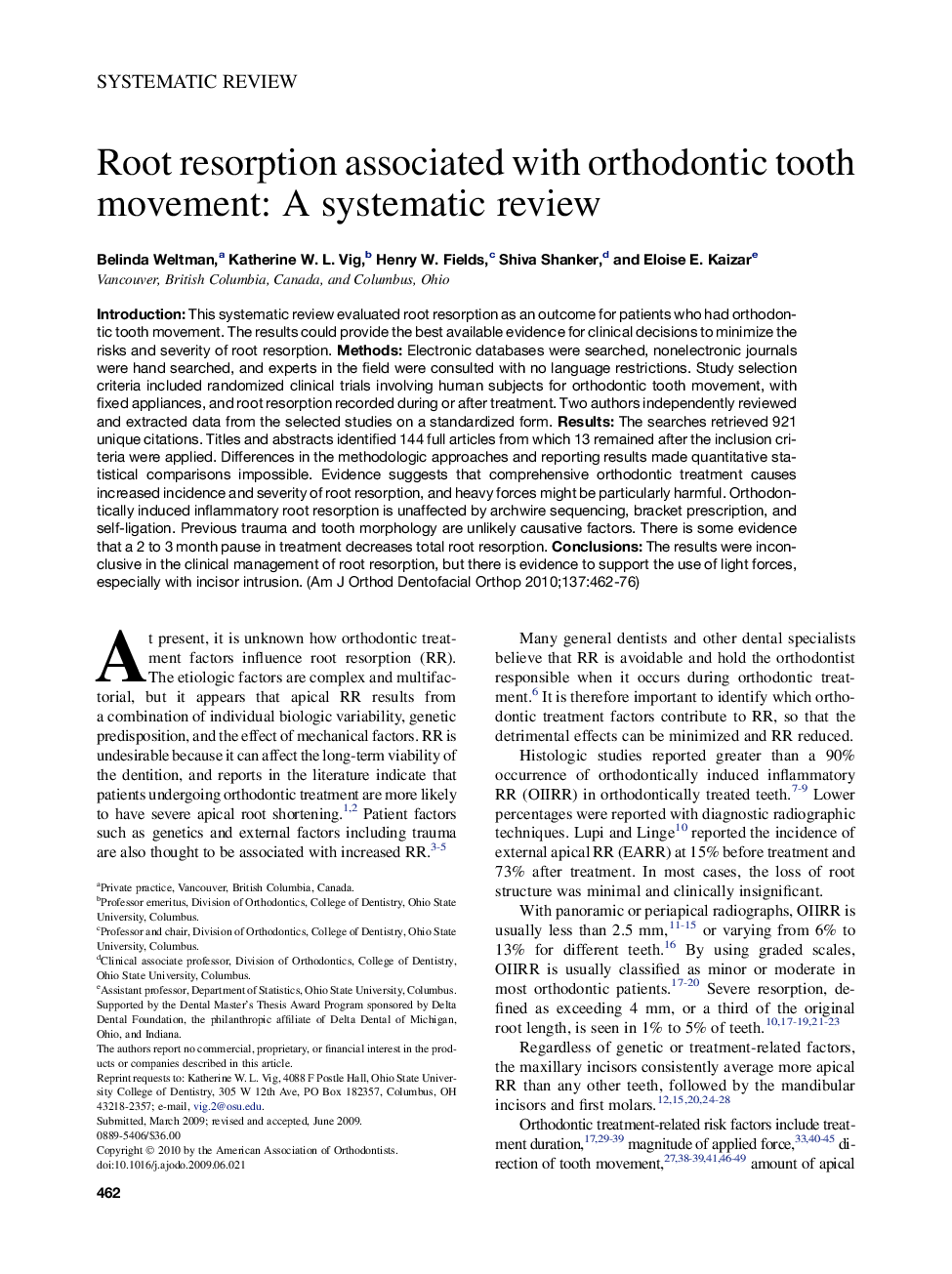| Article ID | Journal | Published Year | Pages | File Type |
|---|---|---|---|---|
| 3117652 | American Journal of Orthodontics and Dentofacial Orthopedics | 2010 | 15 Pages |
IntroductionThis systematic review evaluated root resorption as an outcome for patients who had orthodontic tooth movement. The results could provide the best available evidence for clinical decisions to minimize the risks and severity of root resorption.MethodsElectronic databases were searched, nonelectronic journals were hand searched, and experts in the field were consulted with no language restrictions. Study selection criteria included randomized clinical trials involving human subjects for orthodontic tooth movement, with fixed appliances, and root resorption recorded during or after treatment. Two authors independently reviewed and extracted data from the selected studies on a standardized form.ResultsThe searches retrieved 921 unique citations. Titles and abstracts identified 144 full articles from which 13 remained after the inclusion criteria were applied. Differences in the methodologic approaches and reporting results made quantitative statistical comparisons impossible. Evidence suggests that comprehensive orthodontic treatment causes increased incidence and severity of root resorption, and heavy forces might be particularly harmful. Orthodontically induced inflammatory root resorption is unaffected by archwire sequencing, bracket prescription, and self-ligation. Previous trauma and tooth morphology are unlikely causative factors. There is some evidence that a 2 to 3 month pause in treatment decreases total root resorption.ConclusionsThe results were inconclusive in the clinical management of root resorption, but there is evidence to support the use of light forces, especially with incisor intrusion.
